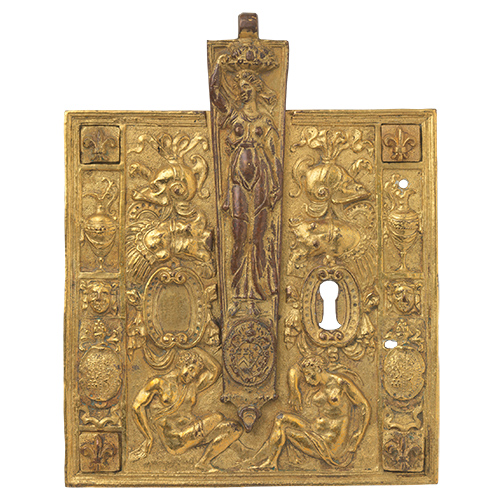Armorial Lockplates: A Story of Success in Renaissance Rome
DOI:
https://doi.org/10.52476/trb.11390Abstract
This article was prompted by a gilt bronze lockplate in the Rijksmuseum, originally the decorative fastening of a chest and one of a large group of similar objects. Hardly any other metalwork design was more extensively reproduced in Italian Mannerism. Its success was based on the appealing design and the fact this type of lockplate offered the possibility of integrating coats of arms and thus personalizing a chest.
The paper presents new examples not yet listed in Charles Avery’s comprehensive overview (2001), identifies a whole series of clients for these lockplates on the basis of heraldic and genealogical analyses and deduces from this an origin in Rome and a dating of the entire group (previously dated 1540) to the last third of the sixteenth century.
It has been generally assumed that the specific function of these objects was to decorate marriage chests. Closer analysis argues against this thesis. The lockplate in the Rijksmuseum is particularly significant in this context. The coats of arms on its lateral cartouches identify the Roman Orazio Ruspoli and his wife Felice Cavalieri (marr. 1594) as the clients for the piece. Surprisingly, however, the crest on the hasp belongs to a family that was not related to this couple. A comparable finding is made for a lockplate in the National Gallery in Washington, which has also been misinterpreted so far. In this case, too, the coats of arms on the plate and on the hasp do not point to a family connection, but to neighbouring and presumably friendly families. The analysis of other examples, such as one in the Palazzo Venezia, confirms that these lockplates and the chests to which they were attached were not exclusively bound to the context of marriage. As travelling chests, which became must-have items for the Roman upper class, they seem to have been open to a variety of functions.
Downloads







